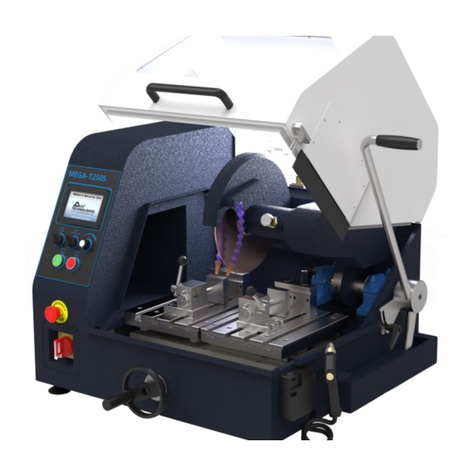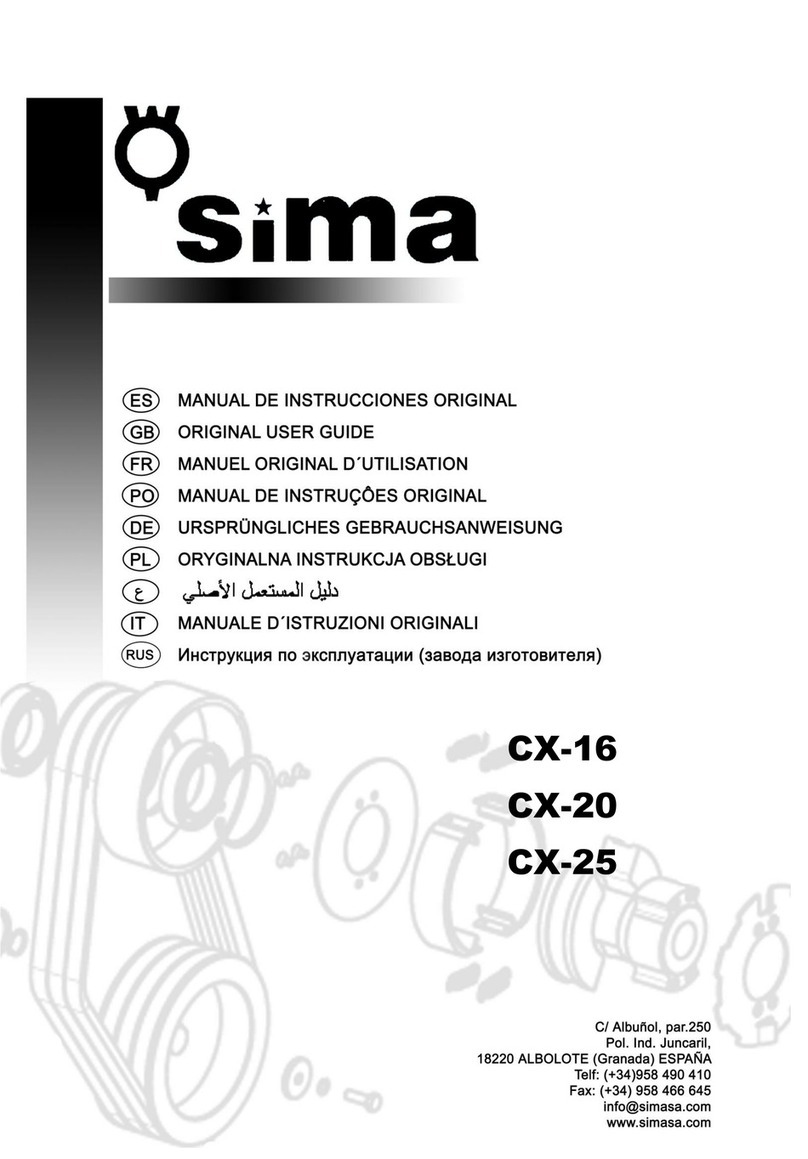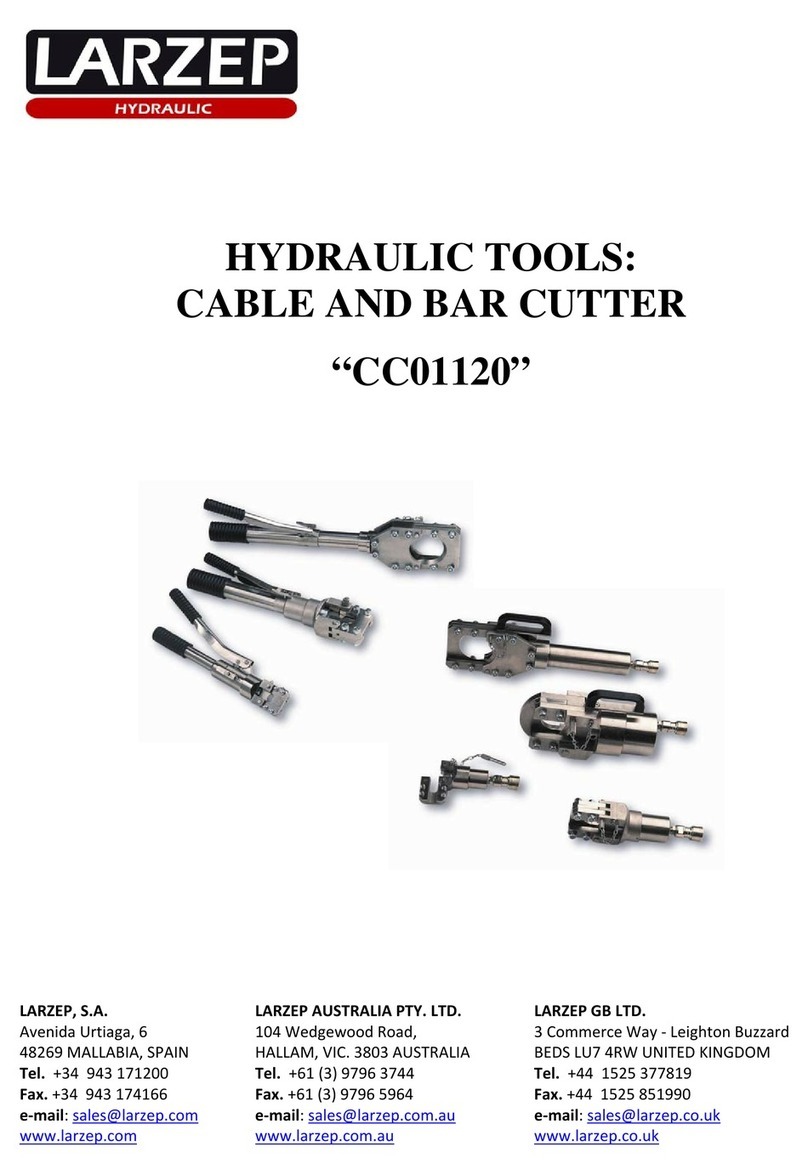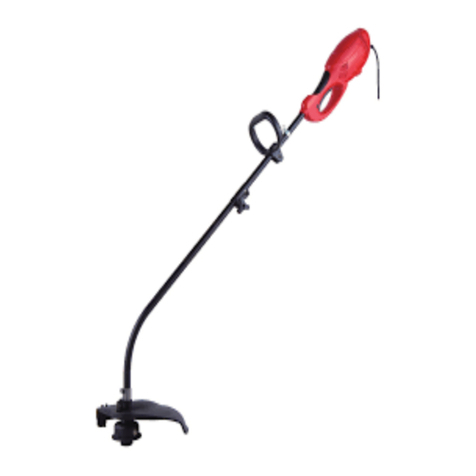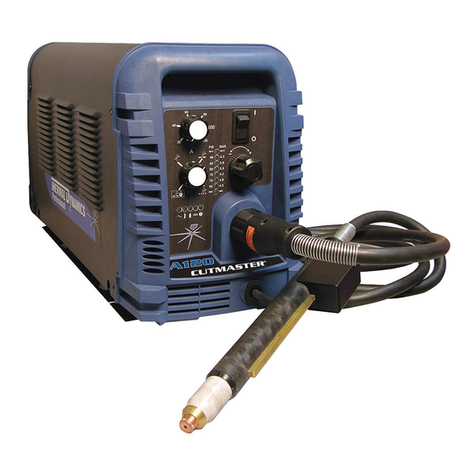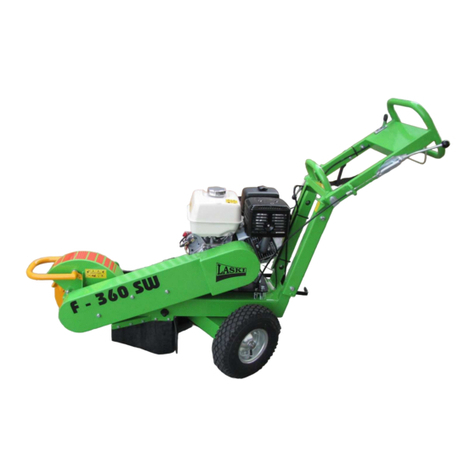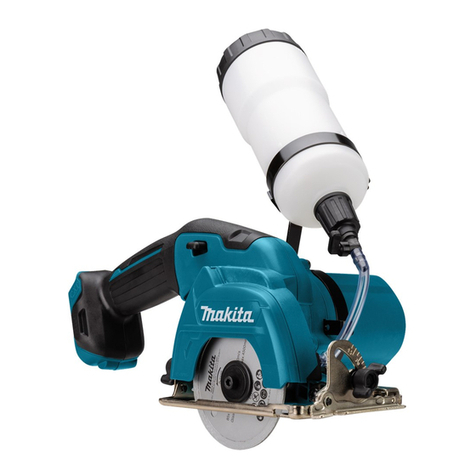JDW ZQ558 User manual

1
ZQ558 04102018
3.6V Grass Shearer
Instruction Manual
Model Ref: ZQ558

01
INTRODUCTION
Thank you for choosing this 3.6V Cordless Shearer.
This product is manufactured to the highest standards of
performance and safety.
Before use, please read this manual carefully. It gives
important instructions about safety, use and maintenance of
your device.
Remove all packaging material. You may wish to keep
the packaging for future use or storage of your device.
Alternatively, dispose of accordingly.
CONTENTS
Introduction.....................................................01
Important Safety Information ........................02
Special Safety Instructions ...........................06
Product Overview...........................................07
Using The Shearer..........................................08
Starting The Machine .....................................08
Specication ...................................................11

02
IMPORTANT SAFETY INFORMATION
WARNING - Read all safety warnings and all instructions.
Failure to follow the warnings and instructions may result in
electric shock, re and/or serious injury. Save all warnings
and instructions for future reference. The term “power tool”
in the warnings refers to your mains-operated (corded)
power tool or battery-operated (cordless) power tool.
Work area safety
- Keep work area clean and well lit. Cluttered or dark areas
invite accidents.
- Do not operate power tools in explosive atmospheres,
such as in the presence of ammable liquids, gases or dust.
Power tools create sparks which may ignite the dust or
fumes.
- Keep children and bystanders away while operating a
power tool. Distractions can cause you to lose control.
Electrical safety
- Power tool plugs must match the outlet. Never modify the
plug in any way. Do not use any adapter plugs with earthed
(grounded) power tools. Unmodied plugs and matching
outlets will reduce risk of electric shock.
- Avoid body contact with earthed or grounded surfaces,
such as pipes, radiators, ranges and refrigerators. There is
an increased risk of electric shock if your body is earthed or
grounded.
- Do not expose power tools to rain or wet conditions. Water
entering a power tool will increase the risk of electric shock.
- Do not abuse the cord. Never use the cord for carrying,
pulling or unplugging the power tool. Keep cord away from
heat, oil, sharp edges or moving parts. Damaged
or entangled cords increase the risk of electric shock.

03
- When operating a power tool outdoors, use an extension
cord suitable for outdoor use. Use of a cord suitable for
outdoor use reduces the risk of electric shock.
- If operating a power tool in a damp location is
unavoidable, use a residual current device (RCD with a
tripping current of 30 mA or less) protected supply. Use
of an RCD reduces the risk of electric shock. NOTE the
term “residual current device (RCD)” may be replaced by
the term “ground fault circuit interrupter (GFCI)” or “earth
leakage circuit breaker (ELCB)”.
Personal safety
- Stay alert, watch what you are doing and use common
sense when operating a power tool. Do not use a power
tool while you are tired or under the inuence of drugs,
alcohol or medication. A moment of inattention while
operating power tools may result in serious personal injury.
- Use personal protective equipment. Always wear eye
protection. Protective equipment such as dust mask, non-
skid safety shoes, hard hat, or hearing protection used for
appropriate conditions will reduce personal injuries.
- Prevent unintentional starting. Ensure the switch is in
the o-position before connecting to power source and/or
battery pack, picking up or carrying the tool.
Carrying power tools with your nger on the switch or
energizing power tools that have the switch on invites
accidents.
- Remove any adjusting key or wrench before turning the
power tool on. A wrench or a key left attached to a rotating
part of the power tool may result in personal injury.
- Do not overreach. Keep proper footing and balance at
all times. This enables better control of the power tool in
unexpected situations.

04
- Dress properly. Do not wear loose clothing or jewellery.
Keep your hair, clothing and gloves away from moving
parts. Loose clothes, jewellery or long hair can be caught in
moving parts.
- If devices are provided for the connection of dust extraction
and collection facilities, ensure these are connected and
properly used. Use of dust collection can reduce dust-related
hazards.
Power tool use and care
- Do not force the power tool. Use the correct power tool for
your application. The correct power tool will do the job better
and safer at the rate for which it was designed.
- Do not use the power tool if the switch does not turn it on
and o. Any power tool that cannot be controlled with the
switch is dangerous and must be repaired.
- Store idle power tools out of the reach of children and do
not allow persons unfamiliar with the power tool or these
instructions to operate the power tool.
Power tools are dangerous in the hands of untrained users.
- Maintain power tools. Check for misalignment or binding of
moving parts, breakage of parts and any other condition that
may aect the power tool’s operation. If damaged, have the
power tool repaired before use. Many accidents are caused
by poorly maintained power tools.
- Keep cutting tools sharp and clean. Properly maintained
cutting tools with sharp cutting edges are less likely to bind
and are easier to control.
- Use the power tool, accessories and tool bits etc. in
accordance with these instructions, taking into account the
working conditions and the work to be performed. Use of the
power tool for operations dierent from those intended could
result in a hazardous situation.

05
Service
- Have your power tool serviced by a qualied repair person
using only identical replacement parts. This will ensure that
the safety of the power tool is maintained.
Battery/Battery charger safety warnings
- Protect the battery charger from rain and moisture. The
penetration of water in a battery charger increases the risk of
electric shock.
- Recharge only with the charger specied by the
manufacturer. A charger that is suitable for one type of
battery pack may create a risk of re when used with another
battery pack.
- Do not charge other batteries. The battery charger is
suitable only for charging lithium ion batteries within the listed
voltage range. Otherwise there is danger, re and explosion.
- Keep the battery charger clean. Contamination may cause
the danger of electric shock.
- Check the battery charger, cable and plug each time before
using. Do not use the battery charger when defects are
detected. Do not open the battery charger yourself and have
it repaired only by qualied personnel using original spare
parts. Damaged battery chargers, cables and plugs increase
the risk of electric shock.
- Do not operate the battery charger on easily inammable
surfaces (e. g. paper, textiles, etc.) or in combustible
environments. There is danger of re due to the heating of
the battery charger during charging.
- Under abusive conditions, liquid may be ejected from the
battery; avoid contact. If contact accidentally occurs, ush
with water. If liquid contacts eyes, additionally seek medical
help. Liquid ejected from the battery may cause irritation or
burns.
- Do not open the battery yourself. There is danger of a short
circuit.

06
- Protect the battery against heat, e.g., including against
continuous sun irradiation and re. There is a danger of
explosion.
- Do not short-circuit the battery. There is a danger of
explosion.
- In case of damage and improper use of the battery,
vapours may be emitted. In case of complaints, provide for
fresh air and consult a physician. The vapours can irritate
the respiratory system.
SPECIAL SAFETY INSTRUCTIONS
- Keep all parts of the body away from the cutter blade. Do
not remove cut material or hold material to be cut when
blades are moving. Make sure the switch is o when clearing
jammed material. A moment of inattention while operating
the hedge trimmer may result in serious personal injury.
- Carry the hedge trimmer by the handle with the cutter
blade stopped. When transporting or storing the hedge
trimmer always t the cutting device cover.
Proper handling of the hedge trimmer will reduce possible
personal injury from the cutter blades.
- Hold the power tool by insulated gripping surfaces only,
because the cutter blade may contact hidden wiring or its
own cord. Cutter blades contacting a “live” wire may make
exposed metal parts of the power tool “live” and could give
the operator an electric shock.
- Keep cable away from cutting area. During operation the
cable may be hidden in shrubs and can be accidentally cut
by the blade.

07
PRODUCT OVERVIEW
Operating Controls
1 Blade
2 Button for battery power status display
3 Charger LED-indicator
4 Safety lock
5 Handle
6 On/O switch
7 SDS drive cover
8 Battery charger
9 SDS drive cover release button

08
STARTING THE MACHINE
WARNING! Only use this machine for applications that will not
cause harm or damage to the user or the product.
Starting:
Push in safety lock 4 and press On/O switch 6 at the same
time, Release safety lock 4.
Stopping:
Release the On/Off switch 6.
Cutting hedges
- Before cutting check the hedge for foreign objects e. g. wire
fences.
- Cut stems up to 8 mm in thickness. When cutting, move
steadily along the line of cut, so that stems are fed directly into
the cutter blades. The double edge of the cutting blade enables
cutting to either direction, or with a side to side motion.
- After use replace the blade transport guard.
Recommended cutting/trimming times:
- Cut hedges with deciduous leaves in June and October.
- Cut evergreen hedges in April and August.
- Cut conifer and other fast growing shrubs approx. every six
weeks from May onwards.

09
Changing the blade
Wear gloves when changing the blade.
Removing
- Push the SDS-blade cover release button 9 and slide the cover
7 towards the On/O switch 6. Lift away from the housing.
- Lift the blade 1 out.
Fitting
- Fit the blade as shown aligning the holes in the blade onto the
drive pins.
- When retting the SDS drive cover ensure all 5 location legs
are inside the housing prior to sliding cover into place.
- Slide the blade cover back towards the blade 1 to secure.
Maintenance
Note: To ensure long and reliable service, carry out the following
maintenance regularly.
- Check for obvious defects such as loose, dislodged
or damaged blade, loose xings and worn or damaged
components.
- Check that covers and guards are undamaged and correctly
tted. Carry out necessary maintenance or repairs before using.
- If the machine should happen to fail despite the care taken in
manufacturing and testing, repair should be carried out by an
authorized customer service agent.
- For all correspondence and spare parts orders, always include
the 10-digit part number (TYP) from the nameplate of the
machine!

10
Blade Maintenance
- Always clean the cutting blades after operation and lubricate with
Bosch Maintenance spray.
- Visually check the condition of the cutting edges of the cutting
blade 1.
- Ensure that the blade is covered with the blade guard supplied
when not in use.
Charging Procedure
- The battery charger supplied matches to the Li-ion battery
installed in the machine. Do not use other battery chargers.
- The Li-ion battery is protected against deep discharging. When
the battery is empty, the machine is switched o by means of a
protective circuit: The blade no longer moves.
- If the On/O switch is subject to continued use, the Li-ion battery
can be damaged.
A The charging process starts as soon as the mains plug of the
battery charger 8 is inserted in the socket and the machine is
then placed on the battery charger. The battery charge indicator 3
lights up red to indicate the charging procedure.
- During the charging procedure, the handle of the machine
warms up. This is normal.
- When not using for extended periods, disconnect the battery
charger from the socket.
- Do not use the machine during the charging procedure.
Battery power status display
By pressing the button 2, the charge status is displayed by three
multi-coloured LED′s 3:
- Red LED is on <6.0 V
- Red + yellow LED′s are on 6.0-7.0 V
- All three LED′s are on 7.0-7.2 V
Once only the red LED is lit, the screwdriver must be re-charged.

11
SPECIFICATION
Rated voltage DC 7.2 V DC 3.6 V
No load speed 1000/min
Hedge trimmer cutting length 110 mm
Grass shear cutting width 70 mm
Declaration of the noise emission values for hedge trimmer
according to EN 60745-1 and EN 60745-2-15
A-weighted sound pressure level
LpA
68dB(A) 67dB(A)
Uncertainty KpA 3dB 3dB
A-weighted sound power leve
LWA
88dB(A) 87dB(A)
Uncertainty KWA 3dB 3dB
Declaration of the noise emission
values for hedge trimmer according
to noise directive A-weighted sound
power level LWA
86dB(A) 86dB(A)
Declaration of the noise emission values for grass shear ac-
cording to EN 60335-1 and FprEN 60335-2-94
A-weighted sound pressure level
LpA
78dB(A) 78dB(A)
Uncertainty KpA 3dB 3dB
A-weighted sound power leve
LWA
88dB(A) 88dB(A)
Uncertainty KWA 3dB 3dB

12
Declaration of the vibration emission of hedge trimmer accord-
ing to EN 60745-1 and EN 60745-2-15
ah 3.7 m/s2 2.3 m/s2
Uncertainty K 1.5 m/s2 1.5 m/s2
Declaration of the vibration emission of grass shear according
to EN 60335-1 and FprEN 60335-2-94
ahW 2,91 m/s2 2,845 m/
s2
Weight [kg] 0.9 kg
Battery cell Li-Ion, 1300 mAh/1000
mAh
Charging time 5-6 h

13
DISPOSAL INFORMATION
Power tools, accessories and packaging should be sorted for
environmentally-friendly recycling.
Only for EC countries:
Do not dispose of power tools into household waste!
According to the European Directive 2002/96/EC on waste
electrical and electronic equipment and its incorporation into
national law, products that are no longer suitable for use
must be separately collected and sent for recovery in an
environmentally-friendly manner.
Battery packs/batteries:
Li-Ion:
Please observe the instructions in the Section “Transport”.
Do not dispose of battery packs/batteries into household
waste, water or re. Battery packs/batteries must be
collected, recycled or disposed of in an environmentally-
friendly way.
Only for EC countries:
Defective or dead batteries must be recycled according to the
directive 2006/66/EC.
Declaration of the vibration emission of hedge trimmer accord-
ing to EN 60745-1 and EN 60745-2-15
ah 3.7 m/s2 2.3 m/s2
Uncertainty K 1.5 m/s2 1.5 m/s2
Declaration of the vibration emission of grass shear according
to EN 60335-1 and FprEN 60335-2-94
ahW 2,91 m/s2 2,845 m/
s2
Weight [kg] 0.9 kg
Battery cell Li-Ion, 1300 mAh/1000
mAh
Charging time 5-6 h

JD Williams Ltd.
Manchester, UK, M60 6ES
M606ESO1
Table of contents
Popular Cutter manuals by other brands
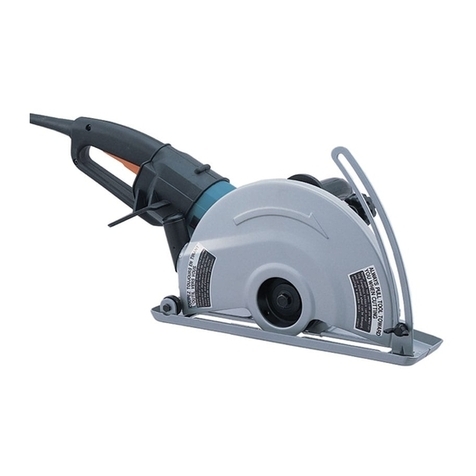
Makita
Makita 4112HS instruction manual
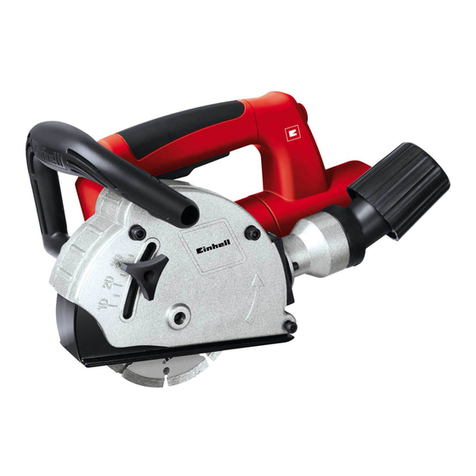
EINHELL
EINHELL TC-MA 1300 Original operating instructions

Yueming
Yueming CMA0604-B-A Product operation manual
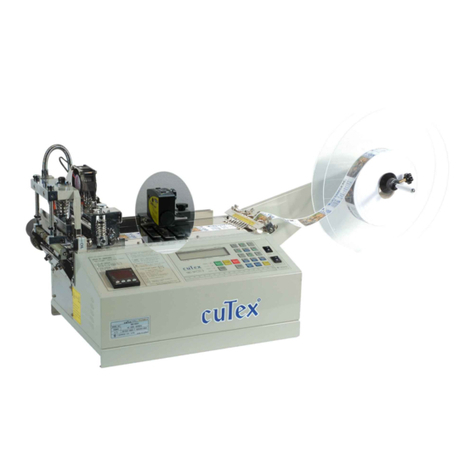
Taewoo
Taewoo cuTex TBC-50SH manual
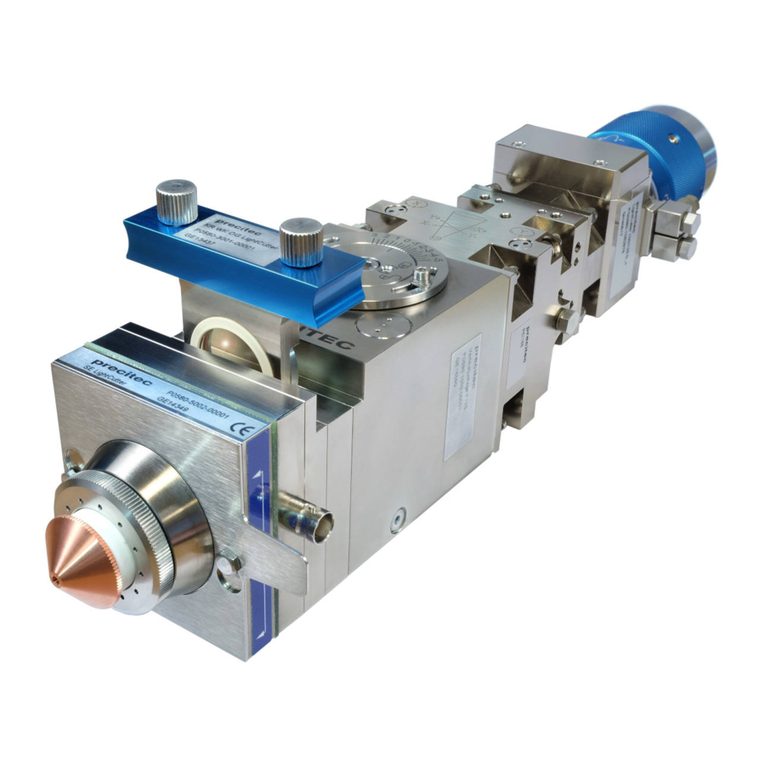
PRECITEC
PRECITEC Lasermatic LightCutter operating instructions
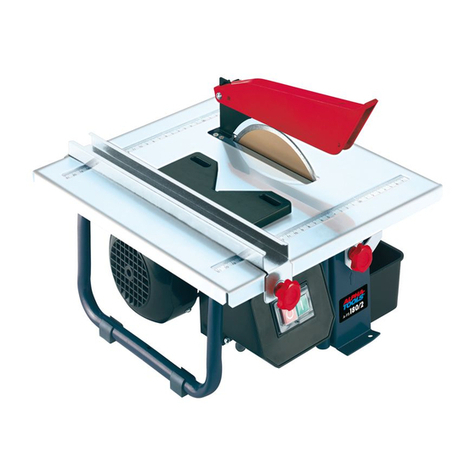
Alpha tools
Alpha tools A-FS 180/2 Original operating instructions
